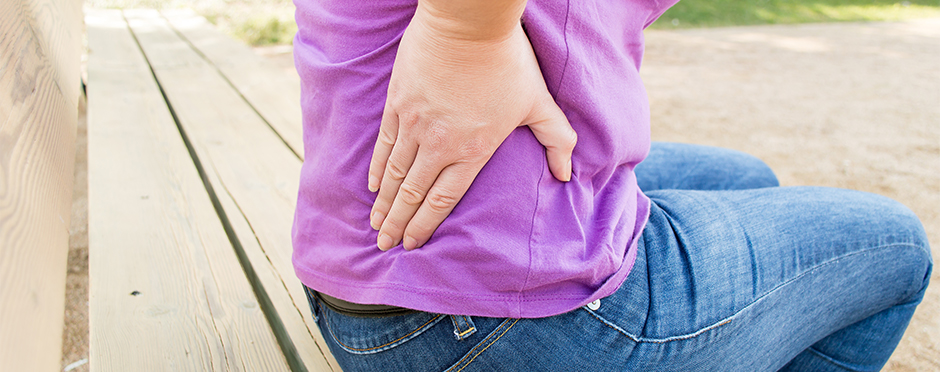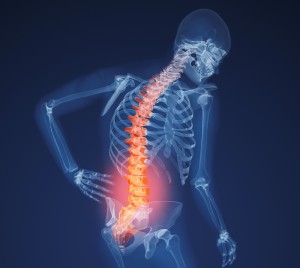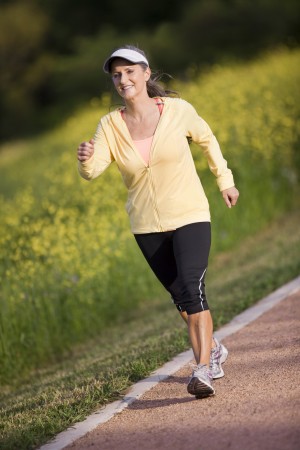
Osteoporosis: Diagnosis, Prevention, & Management
1 CommentOsteoporosis is a bone disease that is defined by low bone density and loss of bone tissue, which puts one at an increased risk of fracture particularly of the spine, hips, and wrists. This can occur when not enough new bone is formed or when old bone is reabsorbed too quickly. In either case an imbalance between bone formation and bone resorption occurs.
 Osteoporosis can be classified as primary type I, primary type II, or secondary. Primary osteoporosis type I is most commonly seen in women following menopause. Primary type II is found in men and women over the age of 75, but is two times more prevalent in females. Secondary osteoporosis can be found in people of any age and is caused by underlying medical problems or prolonged use of medications such as steroids. Secondary osteoporosis can be found equally in men and women.
Osteoporosis can be classified as primary type I, primary type II, or secondary. Primary osteoporosis type I is most commonly seen in women following menopause. Primary type II is found in men and women over the age of 75, but is two times more prevalent in females. Secondary osteoporosis can be found in people of any age and is caused by underlying medical problems or prolonged use of medications such as steroids. Secondary osteoporosis can be found equally in men and women.
Nearly 10 million people in the United State have osteoporosis and 18 million more have low bone mass, which puts them at an increased risk of developing osteoporosis at a later time. Approximately 55% of adults over the age of 50 have osteoporosis. 80% of those are women. In people over the age of 50, it is estimated that one in eight men and one in two women will suffer a fracture related to osteoporosis at some time in their life.
There are many risk factors for the development of osteoporosis.
Non-modifiable risk factors include:
- Advanced age
- Female sex
- Estrogen deficiency in women
- Testosterone deficiency in men
- European and Asian ancestry
- Family history
- Small stature
Modifiable risk factors include:
- Excess alcohol
- Vitamin D deficiency
- Smoking
- Eating disorders
- Malnutrition
There are also many disease processes and medications that cause the development of secondary osteoporosis.
Diagnosis of Osteoporosis
A doctor will begin with a detailed medical history to identify family history and risk factors that may predispose you to the development of osteoporosis. In addition blood work may be performed to identify possible underlying causes. Some of the things that may be measured are calcium, phosphorus, vitamin D, testosterone, and thyroid and kidney function. The doctor will also order imaging. The gold standard test for diagnosing osteoporosis is dual-energy x-ray absorbtiometry (DXA). This test measures the bone mineral density of the spine, hips, or total body.
Prevention/Management
 Prevention of osteoporosis includes lifestyle modification, nutritional changes, fall prevention, and the use of medications. Lifestyle changes include smoking cessation, decreasing alcohol intake, eating a well balanced healthy diet, and participating in exercise. Weightbearing endurance exercise along with resistance exercises to strengthen the muscles can improve the strength of the bones. Exercise also strengthens weak muscles that can improve balance and stability with activities of daily living, which can reduce the chance of falling and fracture. Nutritional changes include supplementation of vitamin D and calcium. Medications are also important in the management of osteoporosis. Biphosphonates, which slow the bone breakdown process, are the most commonly prescribed medications in the management of osteoporosis. These include Fosamax, Actonel, Atelvia, Boniva, Reclast, and Zometa. Hormones such as estrogen and testosterone are sometimes used in the treatment as well.
Prevention of osteoporosis includes lifestyle modification, nutritional changes, fall prevention, and the use of medications. Lifestyle changes include smoking cessation, decreasing alcohol intake, eating a well balanced healthy diet, and participating in exercise. Weightbearing endurance exercise along with resistance exercises to strengthen the muscles can improve the strength of the bones. Exercise also strengthens weak muscles that can improve balance and stability with activities of daily living, which can reduce the chance of falling and fracture. Nutritional changes include supplementation of vitamin D and calcium. Medications are also important in the management of osteoporosis. Biphosphonates, which slow the bone breakdown process, are the most commonly prescribed medications in the management of osteoporosis. These include Fosamax, Actonel, Atelvia, Boniva, Reclast, and Zometa. Hormones such as estrogen and testosterone are sometimes used in the treatment as well.
If you have osteoporosis or believe that you may be at risk, consult your physician for evaluation. A physical therapist can evaluate you and design a customized exercise program. Physical therapy can teach you proper body mechanics, improve your balance and proprioception to decrease the risk of falls, teach fall prevention techniques for home and work, and identify exercises that address your problem areas and strengthen your muscles and bones.
If you would like to learn more from an Athletico physical therapist, please use the button below to request an appointment!
The Athletico blog is an educational resource written by Athletico employees. Athletico bloggers are licensed professionals who abide by the code of ethics outlined by their respective professional associations. The content published in blog posts represents the opinion of the individual author based on their expertise and experience. The content provided in this blog is for informational purposes only, does not constitute medical advice and should not be relied on for making personal health decisions.


1 Comment
Karen Lizana
I am 61 yrs old and I have osteoporosis. (5ft – 5inches- 125 ins)I have an athletic background,have always had a small frame, have never drank alcohol since I was 39 (overindulgence), smoked off and on15 yrs and stopped when I turned 40, tend to be dehydrated and am now working heavy on increasing water intake, never broke a bone. I walk 1 1/2 mile when weather permits and try to stay active. My lower back and cervical are chronic and it is getting worse. I do get better as the day progresses. I do have a PT job(RN) and no longer work on the floor. I went throught menopause on my own as I believe I herbal remedies. My diet is rich in calcium, fit D, lots of green leafy vegetables. More of a vegan with chicken and fish. My question is my hair has a lot of breakage and gets worse, is brittle,damaged. I try everything. Can this be due to osteoporosis and what can I do?